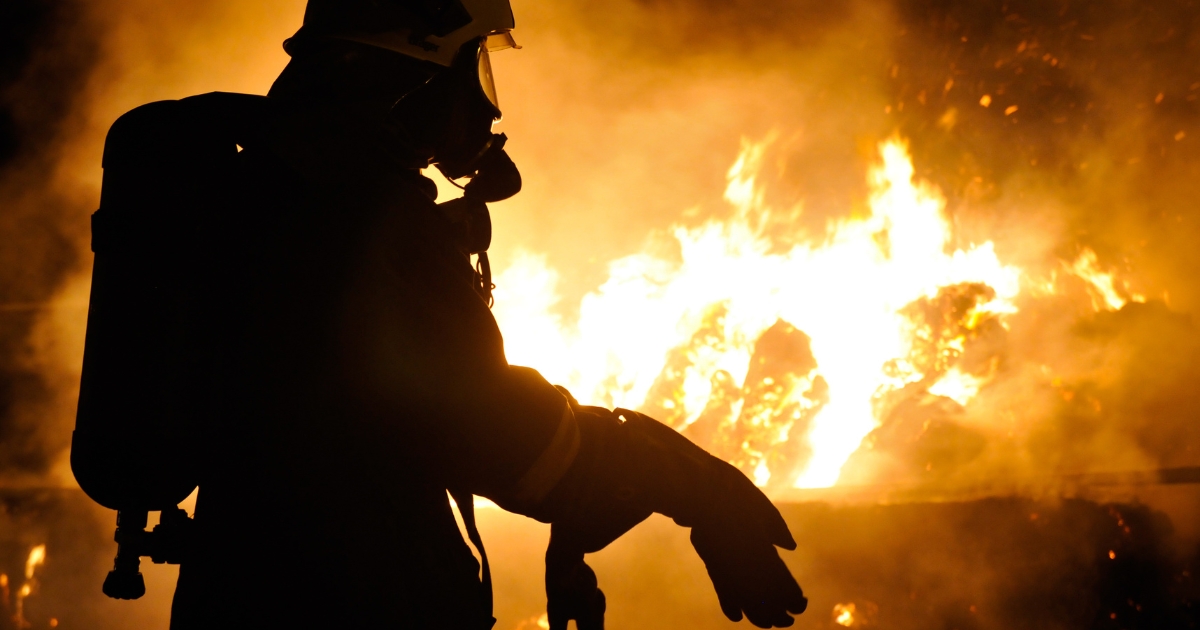Mitigating Against the Risks of Fire On Board

While it is with some relief that the spate of fires over the last 18 months have only caused significant property damage and have not resulted in any serious injury or loss of life, fire damage and the resulting loss is usually devastating, leaving owners, crew and stakeholders in considerable shock, particularly if they have also had to fight the fires themselves.
Serious fires necessitate investigations from local authorities, police, fire brigade, Flag State and, of course, insurers all trying to get to the bottom of what happened. The interested parties will also seek to find ways to limit the loss and damage, often involving wreck removal, clearing up pollution and dealing with third party liabilities.
At least two Flag State reports have confirmed that lithium batteries used to power superyacht toys have caused fires resulting in total losses. However lithium batteries are apparently not always to blame. A number of fires appear to have been caused by electrical faults on board, and the precise cause - whether by a latent defect, product fault or negligent workmanship - may never in fact be determined if the yacht is burnt to a cinder within minutes. Fire investigators must attempt to piece together the picture by examining the physical evidence (fire patterns), along with crew accounts and maintenance records, which together may help to elucidate the cause.
Why are there so many fires on board?
Superyachts are naturally expected to be, well, super, incorporating a luxurious array of modern creature comforts and advanced technology on board. The reality, however, is that the space available for electrical equipment or the storage of superyacht toys is relatively confined, and the proliferation of technology places a high demand on the vessel’s power infrastructure. Furthermore, yachts and their equipment must endure exposure to salt water, humidity and varying extremes of temperature. The apparently elevated risk of fire justifies owners and stakeholders both taking preventative steps to better protect themselves and ensuring they have in place adequate insurance cover.
Are there regulatory changes ahead?
Interestingly, the SOLAS Convention and the IMDG Code (international code for the maritime transport of dangerous goods in packaged form) recognise lithium batteries having a capacity of over 100 watt hours as being subject to strict regulations for carriage. Any e-scooter or jet board battery would certainly be expected to exceed that capacity. The draft Marine Guidance Note 681 of the UK Maritime & Coastguard Agency addresses the handling of lithium batteries onboard yachts subject to the Red Ensign Group Large Yacht Code. This guidance proposes to bring in regulations which closely resemble the obligations for the 'Protection of Spaces Containing Vehicles or Craft with Fuel in their Tanks', relating to storage, charging, management systems, detection and training.

However, the recent spate of fires has mainly occurred on yachts between 20 and 35 metres, that may not always be classed or subject to the regulations applying to larger superyachts. These smaller yachts also have commensurately smaller crews and may not be manned at all times. For these vessels, it seems likely that the impetus for change will be commercial, driven by insurers covering the risks of such catastrophic fire events or marinas, who can ill afford to suffer fires like the one recently reported in Marbella, which destroyed some 80 yachts.
Whilst yachts are usually built and operated to the standards and codes required of them, only those that use new green technologies will be designed with systems for dealing with hazards such as lithium batteries. In any case, it is the owners’ choice as to what they bring on board the yacht, which is not necessarily known to the builder, unless, say, the specification clarifies that electrically-powered water sports equipment will be used, which is frequently the case for larger yachts.
What can owners do to mitigate against the risks of fire?
In our experience, having been involved in handling a number of such fires, there are certainly takeaways that owners, managers and crews for any yacht could easily put into place to mitigate against the risk of fire. For instance:
-
On a new-build yacht, it is important to ensure that on delivery not only are all applicable guarantees and warranties obtained, but that one has confirmation from the builder as to what equipment they will guarantee. If buying through an agency as opposed to the builder, clarification should be sought as to which party is guaranteeing the works. GA plans and electrical diagrams should also be handed over on delivery.
-
For the new-build yacht or even the purchase of a second-hand yacht, it is essential to have a proper survey and sea trial on delivery with full tests of all electrical systems. Indeed, inspections of systems should ideally take place during the build process.
-
When going into a yard or carrying out any works, owners ought to ensure that the yard and any subcontractors have adequate insurance cover. Insurers may be expected to apply terms more stringently in relation to requiring oversight of subcontractors, and a failure to comply with policy terms could result in a claim not being covered.
-
In terms of ongoing maintenance, Dr Nick Carey of Hawkins & Associates (forensic scientists and engineers) recommends that: “Consideration should be given for a requirement for periodic electrical testing (i.e. insulation resistance, continuity of conductors, earth leakage operation time etc.) testing and associated electrical certification which reports the test results for each circuit on-board yachts, as is often required for buildings in the UK. Periodic testing often highlights developing or active electrical faults, the correct operation of safety devices (i.e. earth leakage devices such as RCDs) and/or deteriorating electrical insulation etc.”
-
Early fire detection alarms and systems are essential in giving crew, marinas and firefighting services early notice of fires, with every second and minute being crucial. Such detection systems also ought to be in the proximity of the hazardous items.
-
The crew who are looking after and charging superyacht toys need to be made more aware of the dangers of the equipment they are using, particularly in a marine environment. Manuals should be read and followed, and the manufacturers notified of any issues. Dr Nick Carey explains: “Consideration should be given for the storage of lithium battery packs especially while they are being charged. Substantial enclosures lined with fire resistant material, with fire detection and suppression systems) could form a part of the water sports equipment storage area to store and charge lithium battery packs).”
-
Owners should ensure that any yacht crew has adequate fire training, which addresses the risks of both electrical fires and lithium battery fires.

Greater awareness of the risks amongst the crew who are handling tenders and toys with lithium batteries might go a long way to averting future fires. The Flag state report for KANGA confirmed that “the crew did not seem fully aware of the hazards associated with the lithium-ion batteries, which resulted in an inadequate assessment of the risks involved with these batteries, even after three of the four batteries were found leaking.”
In the unfortunate event of an incident, insurers really do need the full cooperation of the owner, manager and crew to carry out their investigation. Of course, at the outset, and subject to the levels of shock and trauma, obtaining contemporaneous evidence is crucial. What is less well understood is that one can be constrained by, or obliged to follow, the processes within the jurisdiction where the incident happened, resulting in considerable delays until key evidence is released, if at all. The ensuing legal proceedings may take years to unfold and so ongoing cooperation between insurers and assured really does need to continue long after the event.
The reliance on witness statements can be mitigated against if all operational and maintenance records are not lost in the fire. It is prudent for owners or yacht managers to have a centralised location ashore for backing up correspondence and documents. Crews should also avoid communicating with key contractors and yards via social media and messaging services unless these are also regularly backed up.
A related issue is whether marinas, keen to retain the custom of superyacht owners, will now invest in enhanced firefighting capabilities, so as to limit the spread of yacht fires which do occur.
It seems to us that the increased incidence of such fires is not attributable to one single root cause but, rather, is the culmination of several related issues. Owners must appreciate that insurers, yards and marinas will inevitably begin to enforce more stringent stipulations, concerning the equipment brought on board, how it is used and regarding safe manning requirements. Ultimately, a heightened risk awareness and concomitant reduction in the occurrence of fire is a better outcome for all concerned.
A partner in Penningtons Manches Cooper's London office, Sarah is the head of the yacht team advising on all matters relating to superyacht ownership with considerable expertise in handling claims and disputes, including casualties and insurance issues.


Post your comment
You cannot post comments until you have logged in.
Login to post a commentComments
No one has commented on this page yet.
RSS feed for comments on this page | RSS feed for all comments